We’ve known for some time about the benefits of delayed cord clamping, otherwise known as ‘optimal’ cord clamping. Another, formal name for delayed cord clamping is placental transfusion. This means that instead of clamping and cutting the umbilical cord immediately after a baby is born, there’s a wait of at least one minute for babies born at term and at least 30 seconds for babies born prematurely.
What exactly is delayed cord clamping?
According to the Royal Australian and New Zealand College of Obstetricians and Gynaecologists (RANZCOG), delayed cord clamping “Is the practice where the umbilical cord is not clamped or cut until after pulsations have ceased, or until after the placenta is delivered.” Similarly, The World Health Organisation (WHO) recommends delayed umbilical cord clamping - not earlier than one minute after birth for improved maternal and infant health. Premature babies particularly benefit from delayed cord clamping. WHO also advise that delayed cord clamping should be performed during the time a baby is receiving essential newborn care after birth.
What will happen for my baby?
Most Australian maternity hospitals have developed their own Clinical Practice Guidelines to reflect current best practice. For example, this recommendation from QLD Health – “Wait at least 1–3 minutes after birth or for cord pulsation to cease and then clamp and cut cord”.
What’s normally done?
Delayed cord clamping has become routine in most Australian maternity hospitals. However, until recently, premature babies were managed a little differently to full-term babies so they could receive immediate breathing assessment by a paediatrician. New Australian-led research has now identified that there are also benefits for very preterm babies who, given the opportunity, often start breathing by themselves in the first minute after birth.
After delaying cord clamping, all babies, whether they are premature or full-term get extra red and white blood cells and stem cells from the placenta. This means they are supported to achieve healthy oxygen levels, reduce their risk of infection and tissue healing is supported. For premature babies especially, there is also a reduced risk of them needing a blood transfusion and having brain or bowel complications. These benefits translate to long term advantages as well.
Why wait?
Primarily the benefits of delaying clamping and cutting the cord come from the baby gaining extra blood from the placenta which is transfused in the first minute after they’re born. This blood carries oxygen and nutrients which help the baby to transition to independent life.
What are the benefits of delayed cord clamping?
For babies who are well at birth, the benefits range from:
- An increase in their blood volume of around 80-100 mls – depending on the individual baby.
- Optimum iron scores as well as higher scores of iron at 3-6 months.
- Support with the transition from foetal to neonatal circulation (blood flow).
- Less risk of brain haemorrhage and ischaemic gut (reduced blood flow) in babies who are premature.
- Less risk of the baby becoming anaemic.
- Optimum transfer of blood which is rich with antibodies and stem cells, helping to boost immunity.
What are the disadvantages of delayed cord clamping?
Current research is finding there are more benefits than disadvantages, however some disadvantages are:
- An increased risk of jaundice and needing phototherapy.
- Less blood available for stem cell collection.
Premature babies and delayed cord clamping
Until recently, the general practice for premature babies was to have their cord cut almost immediately after birth and to be taken to a resuscitation table to be assessed by a paediatrician. Recent research is examining the benefits of keeping the baby attached to the placenta for 60 seconds or longer before clamping and cutting. This is even possible during a caesarean section where the paediatric team goes to the baby and mother, rather than separating them immediately after birth.
It seems that the placenta has a vital role to play in relation to a newborn’s breathing and their resuscitation, if needed, at birth. Some experts view the placenta as the baby’s ‘lungs’, until their own lungs take over the role of independent breathing.
The outcome of recent research and its findings is that there is likely to be changes to the national guidelines to how clinicians manage cord clamping and cutting.
If you’re interested in learning more about delayed cord clamping
Speak with your maternity care provider and read as much information as possible about the risks and benefits. Check the references below for more, evidence-based information or signup to our Antenatal Course Bundle or Guide for New Parents.
About the Author:
Written for Nourish Baby by Jane Barry. Jane has qualifications in general, paediatric, immunisation, midwifery and child health nursing. She holds a Bachelor Degree in Applied Science (Nursing) and has almost 35 years specialist experience in child health nursing. She is a member of a number of professionally affiliated organisations including AHPRA, The Australasian Medical Writer’s Association and Australian College of Children and Young People’s Nurses.
References
Labour and birth—cord clamping (Mater Mothers)
Our Products
-
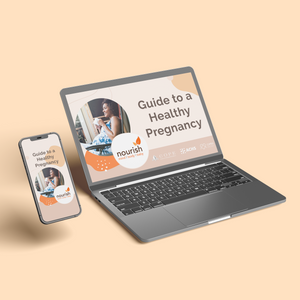
01. Guide to a Healthy Pregnancy
$55 -
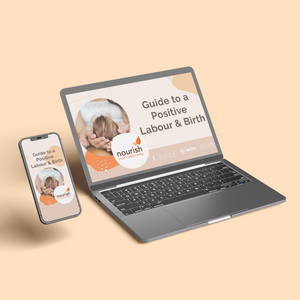
02. Positive Birthing Course
$55 -
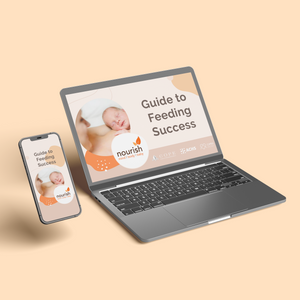
03. Infant Feeding Guide
$55 -
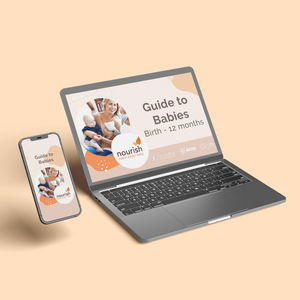
04. Baby Sleep Guide - First 12 Months
$55 -
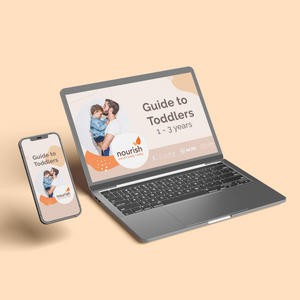
05. Toddler Parenting Course 1 - 3 Years
$55
-
 When to Start Antenatal Classes?
When to Start Antenatal Classes?
Becoming a parent is an incredible milestone, but it comes with a host of changes that can be daunting, especially for first time parents. Antenatal classes are all about offering expectant parents the education they need to make informed decisions, look after their bodies and care for their newborn babies. While you probably already have a long list of things you need to accomplish during your pregnancy, it’s a good idea to make time to attend antenatal classes.
-
 Development Milestones 4-8 Months
Development Milestones 4-8 Months
As they reach the middle of their first year, you'll start to see bigger leaps in their growth and ability!
In this article, we’re going to discuss your baby’s developmental milestones between 4-8 months, and what you can expect along the way.





 When to Start Antenatal Classes?
When to Start Antenatal Classes?
 Development Milestones 4-8 Months
Development Milestones 4-8 Months








